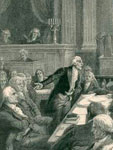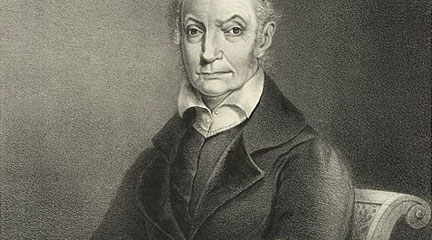Teaser
Examine the definition of treason in the cases of Aaron Burr and John Walker Lindh.
Description
Unpublished because Lesson Plan no longer exists at the Bill of Rights Institute Students apply rulings from Burr's Supreme Court trial to a contemporary case using historical documents.
Article Body
Examining a historical Supreme Court case is a great opportunity to teach students about the past as well as about the precedents that shape the American legal landscape.
In this lesson, students examine the 1807 trial of Aaron Burr in which the former Vice President was indicted for treason. After examining Chief Justice John Marshall’s decision, students are asked to apply his interpretation of the Constitution to the more recent case of John Walker Lindh, American Taleb.
The lesson centers on three primary documents: Article III, Section 3 of the U.S. Constitution, an excerpt from Burr’s indictment, and an excerpt from Marshall’s ruling. These documents allow students to explore the legal definition of treason, the claims made against Burr, and Marshall’s reasons for finding Burr innocent. Examination of Lindh's case teaches students to apply Constitutional definitions and past interpretations thereof, in the form of legal precedent, to recent events.
While the primary documents are a bit challenging, they are accompanied by specific questions that help students identify key points in the texts. Teacher answer keys with multiple possible answers are included with all activities.
Topic
Aaron Burr, Treason, Justice Marshall
Rubric_Content_Accurate_Scholarship
Rubric_Content_Historical_Background
Yes
This link provides useful background information for both teachers and students.
Rubric_Content_Read_Write
Yes
Students are required to read two primary sources, excerpts from the Constitution, and secondary sources on a related contemporary case. Students are asked to write a 1-2 page response where they apply Marshall’s decision to this contemporary case.
Rubric_Analytical_Construct_Interpretations
Rubric_Analytical_Close_Reading_Sourcing
Yes
Student handout specifically asks students to consider source information.
Rubric_Scaffolding_Appropriate
Yes
The text is a bit challenging, but the excerpts are brief and several guiding questions are included to help students identify key points.
Rubric_Scaffolding_Supports_Historical_Thinking
Yes
To help students interpret the documents, they are presented with questions that help them consider the source information of the document.
Rubric_Structure_Assessment
Yes
While the main assessment asks students to consider a contemporary court case, the guiding questions and answer key for the historical documents focus on historical understanding.
Rubric_Structure_Realistic
Rubric_Structure_Learning_Goals



